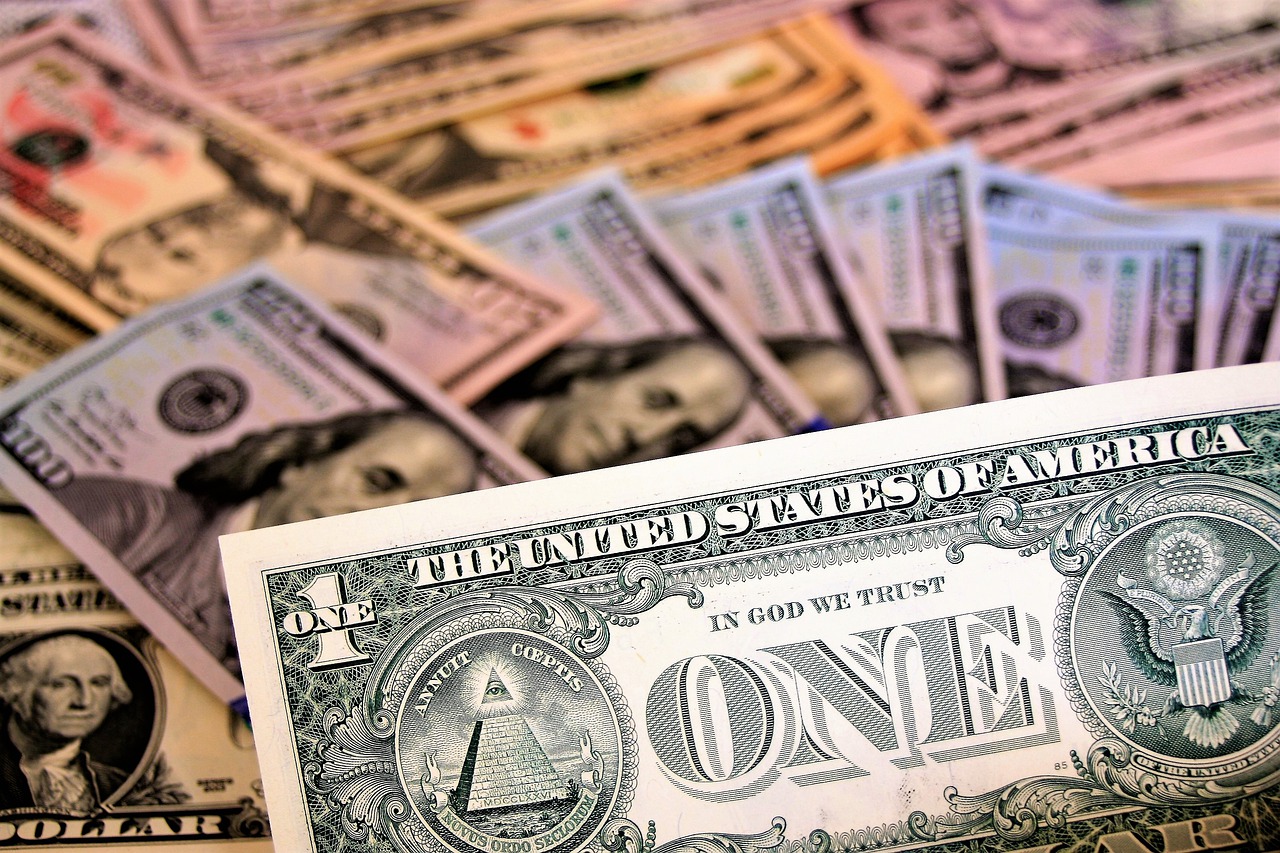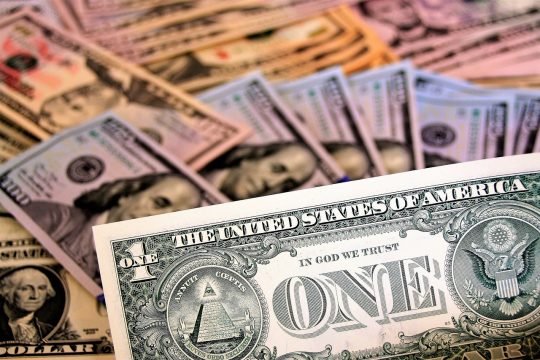 You don’t use up all of your ammunition before the battle even begins. The U.S. economy has not even officially entered recession territory yet, although many experts are definitely anticipating one in 2020. When that recession arrives, the Federal Reserve is going to want as much ammunition to fight it as possible. So I was horrified to learn that the Federal Reserve announced on Wednesday that interest rates are being slashed once again. We have now had three interest rate cuts in 2019 as the Federal Reserve desperately attempts to revive the stalling U.S. economy. But what are they going to do during the next recession when they have already pushed interest rates all the way to the floor and they can’t push them any lower? In addition, in recent days the Federal Reserve has decided to absolutely flood the financial system with new money in a desperate attempt to stabilize the repo market. In essence, the Federal Reserve has launched a massive new round of quantitative easing even before a major crisis has erupted on Wall Street. I can understand trying to be proactive, but in reality quantitative easing is an extreme emergency measure that should only be used in the most desperate of situations. If the Fed is creating this much new money now, what are they going to do once things really get bad? Are we destined to become the next Venezuela?
You don’t use up all of your ammunition before the battle even begins. The U.S. economy has not even officially entered recession territory yet, although many experts are definitely anticipating one in 2020. When that recession arrives, the Federal Reserve is going to want as much ammunition to fight it as possible. So I was horrified to learn that the Federal Reserve announced on Wednesday that interest rates are being slashed once again. We have now had three interest rate cuts in 2019 as the Federal Reserve desperately attempts to revive the stalling U.S. economy. But what are they going to do during the next recession when they have already pushed interest rates all the way to the floor and they can’t push them any lower? In addition, in recent days the Federal Reserve has decided to absolutely flood the financial system with new money in a desperate attempt to stabilize the repo market. In essence, the Federal Reserve has launched a massive new round of quantitative easing even before a major crisis has erupted on Wall Street. I can understand trying to be proactive, but in reality quantitative easing is an extreme emergency measure that should only be used in the most desperate of situations. If the Fed is creating this much new money now, what are they going to do once things really get bad? Are we destined to become the next Venezuela?
For a long time, the Federal Reserve has insisted that the U.S. economy is in good shape. If that is true, there is no way in the world that the Fed should be cutting interest rates. But that is exactly what happened on Wednesday…
In a vote widely anticipated by financial markets, the central bank’s Federal Open Market Committee lowered its benchmark funds rate by 25 basis points to a range of 1.5% to 1.75%. The rate sets what banks charge each other for overnight lending but is also tied to most forms of revolving consumer debt.
It was the third cut this year as part of what Fed Chairman Jerome Powell has characterized as a “midcycle adjustment” in a maturing economic expansion.
With rates now so close to zero, there isn’t going to be much that the Fed can do in that regard once the next recession strikes.
According to Fed Chair Jerome Powell, this latest rate cut was done for “insurance” purposes…
Powell said lowering the rate again was ‘insurance’, or protection needed because ‘weakness in global growth and trade developments have weighed on the economy and posed ongoing risks’.
If the U.S. economy doesn’t plunge into a deep recession next year, Powell and the other bureaucrats at the Fed will probably be applauded for these moves.
But if we do experience a significant economic downturn, they will be caught with their pants down.
Yes, the U.S. economy is definitely slowing down, but this week we learned that it still grew at an annual rate of 1.9 percent last quarter.
1.9 percent is not good at all, and if honest numbers were being used it would show that our economy is actually contracting. But at least things are relatively stable for the moment, and as long as things are relatively stable the Federal Reserve should not be resorting to emergency measures.
Of course Wall Street was absolutely thrilled that the Fed cut rates again, and news of the rate cut pushed the S&P 500 to yet another all-time record high…
Stocks advanced Wednesday after the Federal Reserve cut interest rates for the third time this year, propelling the Standard & Poor’s 500 to a fresh record.
The S&P 500 index added 9.88 points, or 0.3%, to close at 3046.77. The Dow Jones industrial average climbed 115.27 points, or 0.4%, to end at 27,186.69. The Nasdaq added 27.12 points, or 0.3%, at 8,303.98.
And without a doubt, this rate cut is good for consumers. Rates on mortgages, auto loans and credit cards will go down, and that will save average Americans a lot of money…
These Fed interest rate cuts are starting to add up, lowering costs for many Americans who use credit cards or take out loans while squeezing savers.
The Federal Reserve lowered its benchmark interest rate Wednesday by a quarter percentage point for the third time in the past three months. The move is likely to further trim borrowing costs on credit cards, home equity lines, adjustable-rate mortgages and auto loans.
But this is yet another example of the short-term thinking that is plaguing our society.
When the next recession arrives, the Fed will be able to cut rates a handful of times, and then that will be the end of it.
The Fed should have also held off on buying more bonds until we really needed it as well. Even though a new financial crisis has not even started yet, the Fed has been creating money like crazy and their balance sheet has ballooned “by about $100 billion over the past month”…
The Fed has been buying bonds again, but officials insist it is an effort to stabilize the funds rate within the target range rather than a resurrection of QE. Still, the central bank balance sheet has expanded by about $100 billion over the past month and is back above the $4 trillion mark, $3.6 trillion of which is in Treasurys and mortage-backed securities.
So if the Fed is being this crazy now, what are they going to do when a real financial crisis erupts?
Perhaps they should just get it over with and create trillions of dollars right now and turn us into the Weimar Republic already.
Because that is where all of this craziness is eventually going to take us. Our dollar is eventually going to be absolutely worthless and we will become the next Venezuela.
I have always been highly critical of the Federal Reserve, but at least in other eras those running the Fed were at least mildly competent.
But now it appears that incompetence is running wild over at the Federal Reserve, and we will all pay a great price for their mistakes in the not too distant future.
About the Author: I am a voice crying out for change in a society that generally seems content to stay asleep. My name is Michael Snyder and I am the publisher of The Economic Collapse Blog, End Of The American Dream and The Most Important News, and the articles that I publish on those sites are republished on dozens of other prominent websites all over the globe. I have written four books that are available on Amazon.com including The Beginning Of The End, Get Prepared Now, and Living A Life That Really Matters. (#CommissionsEarned) By purchasing those books you help to support my work. I always freely and happily allow others to republish my articles on their own websites, but due to government regulations I can only allow this to happen if this “About the Author” section is included with each article. In order to comply with those government regulations, I need to tell you that the controversial opinions in this article are mine alone and do not necessarily reflect the views of the websites where my work is republished. This article may contain opinions on political matters, but it is not intended to promote the candidacy of any particular political candidate. The material contained in this article is for general information purposes only, and readers should consult licensed professionals before making any legal, business, financial or health decisions. Those responding to this article by making comments are solely responsible for their viewpoints, and those viewpoints do not necessarily represent the viewpoints of Michael Snyder or the operators of the websites where my work is republished. I encourage you to follow me on social media on Facebook and Twitter, and any way that you can share these articles with others is a great help.


